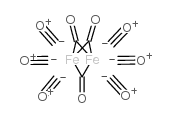Structure and bonding in binuclear metal carbonyls from the analysis of domain averaged Fermi holes. I. Fe2(CO)9 and Co2(CO)8.
Robert Ponec, György Lendvay, Joaquin Chaves
Index: J. Comput. Chem. 29(9) , 1387-98, (2008)
Full Text: HTML
Abstract
The nature of the bonding in the above carbonyls was studied using the analysis of domain averaged Fermi holes (DAFH). The results straightforwardly confirm the conclusions of earlier theoretical studies in which the existence of direct metal-metal bond, anticipated for the above carbonyls on the basis of 18-electron rule, was questioned. In addition to indicating the lack of direct metal-metal bond, the DAFH analysis also allowed to characterize the nature of the electron pairs involved in the bonding of the bridging ligands. The analysis has shown that because the number of available electron pairs is not sufficient for the formation of ordinary localized 2c-2e bonds between terminal M(CO)(3) fragments and the bridging ligands, the bonding in both carbonyls exhibits typical features of electron deficiency and one bonding electron pair is effectively involved in multicenter 3c-2e bonding. Because of the symmetry of the complexes the bridging ligands are not distinguishable and all M-C-M bridges have a partial 3c-2e nature via resonance of the localized structures.(c) 2008 Wiley Periodicals, Inc.
Related Compounds
| Structure | Name/CAS No. | Molecular Formula | Articles |
|---|---|---|---|
 |
Diiron nonacarbonyl
CAS:15321-51-4 |
C9Fe2O9 |
|
Time-dependent density functional theory study of Fe2(CO)9 l...
2006-11-30 [J. Phys. Chem. A 110(47) , 12900-7, (2006)] |
|
Structure and energetics of Fe2(CO)8 singlet and triplet ele...
2007-12-06 [J. Phys. Chem. A 111(48) , 12152-62, (2007)] |
|
Unusual reactions of [{micro-(phthalazine-N2:N3)}Fe2(micro-C...
2006-01-28 [Dalton Trans. (4) , 603-8, (2006)] |
|
Simons, R.S. Tessier, C.A.
[Organometallics 15 , 2604, (1996)] |
|
Crump, S. L.; Netka, J.; Rickborn, B.
[J. Org. Chem. 50 , 2746, (1985)] |